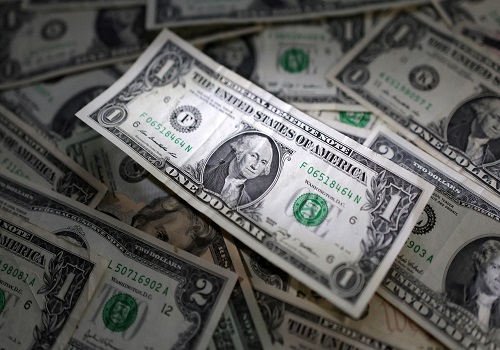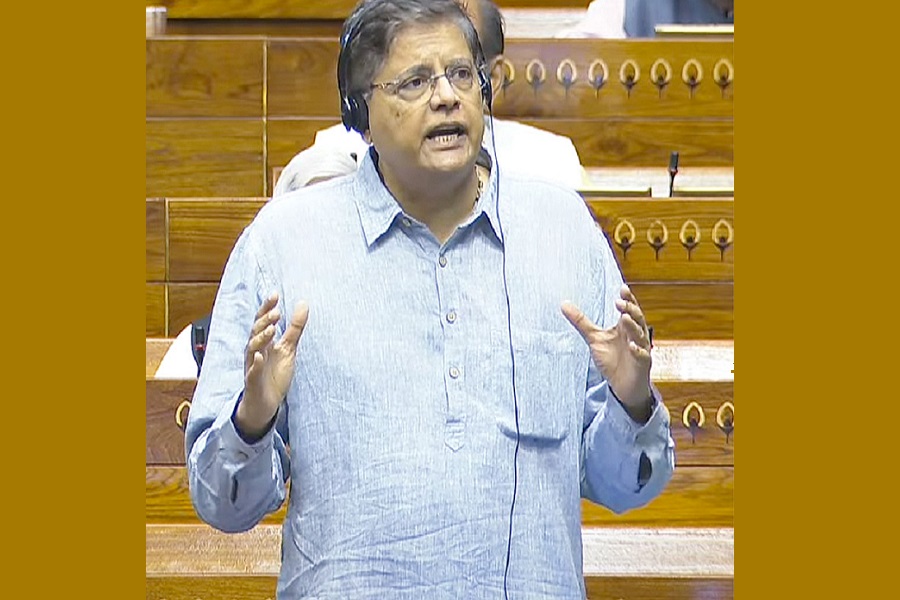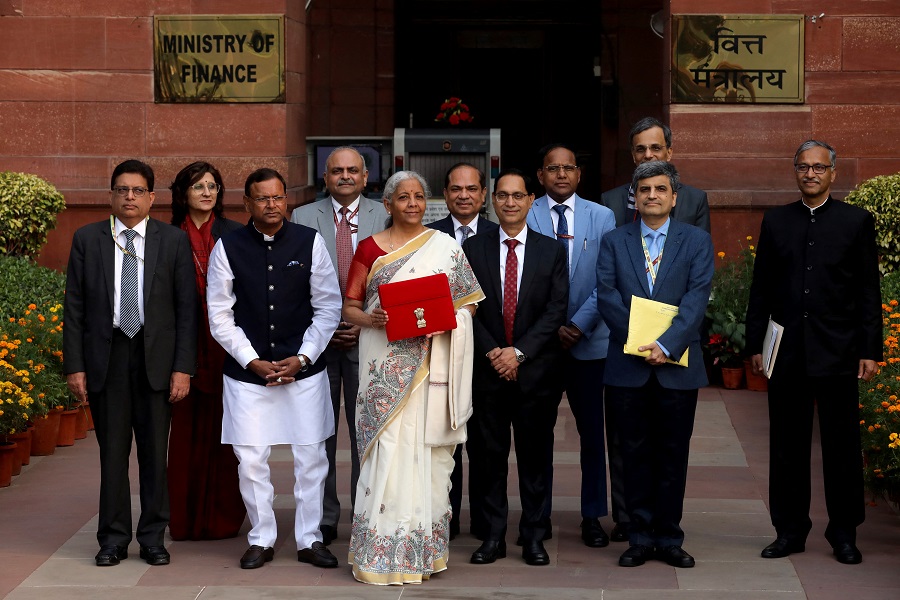Cottoncandy trading range for the day is 53000-53100 - Kedia Advisory

Gold
Gold prices edged up by 0.14% to settle at Rs.97,173 amid investor anticipation surrounding the second round of US-China trade talks. The renewed diplomatic engagement following a key call between Presidents Trump and Xi has sparked optimism in the markets, offering potential relief from geopolitical tensions that have supported safe-haven demand. However, stronger-than-expected U.S. non-farm payroll data has prompted a shift in interest rate expectations, with markets now anticipating only one rate cut from the Federal Reserve this year, likely in October, which could limit further upside in gold prices. On the central bank front, the People's Bank of China continued to boost its gold reserves for the seventh consecutive month in May, lifting holdings to 73.83 million fine troy ounces. This sustained buying trend comes as central banks globally are projected to purchase nearly 1,000 metric tons of gold in 2025, marking a fourth consecutive year of large-scale diversification away from dollar-based assets. Despite this, physical demand remains under pressure. In India, discounts widened to $56 per ounce due to elevated domestic prices, reflecting weak consumer interest. Conversely, Chinese premiums ranged between $10 and $14, indicating stronger local demand. Technically, gold is in short covering as open interest fell 3.4% to 13,182. Support lies at Rs.96,540, with further downside seen at Rs.95,910, while resistance is at Rs.97,545, and a breakout may push prices to Rs.97,920.
Trading Ideas:
* Gold trading range for the day is 95910-97920.
* Gold steadied as investors awaited the second round of US-China trade talks.
* Stronger-than-expected U.S. non-farm payrolls data have led investors to scale back expectations for Fed rate cuts this year
* China's central bank added gold to its reserves in May for the seventh straight month.
Silver
Silver prices surged by 1.54% to settle at Rs.107,087, supported by sustained safe-haven demand amid ongoing global economic and trade uncertainties. The metal also benefited from a rotation of investor interest from gold—following its relative underperformance—toward alternative precious metals like silver. Renewed caution ahead of US-China trade negotiations in London, compounded by weaker-than-expected Chinese export data for May, underpinned the sentiment for silver, traditionally seen as both a hedge and an industrial metal. On the industrial front, silver continues to gain strong support from its extensive use in solar energy and green technology applications. According to the Silver Institute, global silver supply fell 15% short of demand in 2024, and a significant deficit is expected to persist in 2025 for the fifth consecutive year. Industrial demand alone is forecast to hit a record high of over 700 million ounces this year, driven by structural gains in clean energy sectors. Silver demand in 2025 is projected to remain robust at around 1.2 billion ounces, with investment demand expected to rise by 3%, primarily from Europe and North America. However, jewelry and silverware demand is anticipated to decline by 6%, with India contributing most of the contraction due to high domestic prices. Technically, silver is witnessing fresh buying interest, with open interest rising 5.56% to 22,489. Immediate support lies at Rs.105,760, below which prices could test Rs.104,430. On the upside, resistance is pegged at Rs.107,795, and a break above may take prices toward Rs.108,500.
Trading Ideas:
* Silver trading range for the day is 104430-108500.
* Silver rose on safe-haven demand amid global trade and economic uncertainty.
* Caution ahead of US-China trade talks kept market sentiment subdued.
* Strong industrial demand, especially from solar energy, supported silver prices.
Crude oil
Crude oil prices rose by 0.56% to settle at Rs.5,565, supported by renewed optimism surrounding US-China trade negotiations, which reignited hopes of easing tariff-related pressures on global oil demand. The geopolitical backdrop remains a key influence, with any improvement in diplomatic relations between the two largest economies expected to bolster demand sentiment in energy markets. On the supply side, OPEC's output increased modestly in May, rising by 150,000 barrels per day (bpd) to 26.75 million bpd. The increase was primarily led by Saudi Arabia, which hiked production by 130,000 bpd. Meanwhile, China's crude oil imports fell in May to a four-month low of 10.97 million bpd, attributed to extensive maintenance across refineries, curbing near-term demand from the world’s largest oil importer. On the U.S. front, crude inventories dropped sharply by 4.304 million barrels last week, the largest decline since November 2024, signaling tightening domestic supply. The International Energy Agency (IEA) revised its 2025 global oil demand growth forecast upward to 740,000 bpd due to improved economic prospects and lower prices, although the pace is expected to slow from earlier quarters. Technically, the market is in a phase of short covering, with open interest falling 3.71% to 8,536 as prices moved higher. Immediate support lies at Rs.5,511, with further downside potential to Rs.5,456. On the upside, resistance is seen at Rs.5,607, and a breakout could push prices towards Rs.5,648.
Trading Ideas:
* Crudeoil trading range for the day is 5456-5648.
* Crude oil gains amid renewed optimism over US-China negotiations, could ease pressures on oil demand.
* OPEC oil output rose in May by less than the volume planned, as Iraq made further cuts
* China's crude oil imports fell in May to their lowest daily rate in four months
Natural gas
Natural gas prices declined sharply by 4.45% to settle at Rs.311.2, pressured by bearish fundamentals and a larger-than-expected storage build in the U.S. The Energy Information Administration (EIA) reported an injection of 122 billion cubic feet (bcf) for the week ending May 30, surpassing market expectations of 111 bcf. This marked the seventh straight week of above-average builds, pushing total U.S. gas inventories to 2.598 trillion cubic feet—4.7% above the five-year average, although still 10% below levels from the same period last year. European gas prices also trended lower as regional storage levels crossed the 50% threshold, easing supply concerns and adding pressure to global prices. In the U.S., gas production in the Lower 48 states averaged 104.0 bcfd so far in June, slightly below May’s 105.2 bcfd and well off the March peak of 106.3 bcfd. Despite this decline, the EIA projects record output levels in the coming years, with production expected to rise to 104.9 bcfd in 2025 and 106.4 bcfd in 2026. Demand also remains strong, supported by forecasts of warmer-than-normal weather through mid-June, which could lift cooling-related gas usage. Technically, the market is undergoing long liquidation, evidenced by a steep 39.4% drop in open interest to 11,539. Immediate support lies at Rs.305, with a break below likely to test Rs.298.7. On the upside, resistance is seen at Rs.319.8, with further gains possible up to Rs.328.3.
Trading Ideas:
* Naturalgas trading range for the day is 298.7-328.3.
* Natural gas fell following a drop in European gas prices as storage levels surpassed 50% capacity.
* Lower 48 states' output averaged 104.0 bcfd in June, down from recent months.
* EIA reported a 122 bcf storage build, surpassing 111 bcf expectations.
Copper
Copper prices climbed by 0.78% to settle at Rs.882.6, supported by mounting concerns over global supply disruptions and potential trade policy shifts. Production setbacks at key mining hubs in South America and Africa have fueled fears of tightening availability. In Chile, Teck Resources is grappling with prolonged operational issues, while output at the Kamoa-Kakula project in the Democratic Republic of Congo remains disrupted. These events have amplified bullish sentiment, especially amid declining inventories at the London Metal Exchange, which dropped to 138,000 tons—the lowest in nearly a year and down almost 50% year-to-date—signaling strong industrial demand. Further price support came from rising speculation around trade barriers after former President Donald Trump signed an executive order doubling tariffs on steel and aluminum to 50%. This has raised concerns that copper could soon face similar tariff hikes, particularly as investigations into copper imports intensify in the U.S. On the fundamental front, the global refined copper market showed a narrowing surplus of 17,000 metric tons in March, down from 180,000 tons in February, as reported by the International Copper Study Group (ICSG). However, a broader surplus of 289,000 tons was still recorded in the first quarter of 2025. Technically, the market witnessed short covering with a 4.3% drop in open interest to 6,694, supporting the price uptick. Immediate support is seen at Rs.877.1, with further downside testing likely at Rs.871.4. Resistance is now pegged at Rs.886.5, and a break above could push prices toward Rs.890.2.
Trading Ideas:
* Copper trading range for the day is 871.4-890.2.
* Copper gains fueled by supply disruptions and concerns over potential US tariffs.
* China's imports of copper fell 2.5 % from month ago to 427,000 tonnes in May
* Inventories at LME warehouses have been steadily declining, signaling robust demand.
Zinc
Zinc prices slipped by 0.39% to settle at Rs.252.4, pressured by profit booking and lingering concerns over global trade uncertainties. The market remained cautious as investors closely monitored the progress of US-China trade negotiations, with persistent tariff-related tensions continuing to weigh on sentiment. Broader weakness across the global metals complex added to the downward pressure, reflecting investor nervousness amid an uncertain economic outlook. Demand-side concerns were further amplified by China’s sluggish manufacturing activity. The country’s manufacturing PMI contracted for the second consecutive month in May, reinforcing expectations that Beijing may soon introduce additional stimulus measures to support industrial output. Such policies could potentially revive zinc demand in the coming months. On the supply front, data from the International Lead and Zinc Study Group (ILZSG) revealed that the global zinc market surplus narrowed to 23,700 metric tons in March from 75,900 tons in February. Despite this tightening, a surplus of 143,000 tons was still recorded in the first quarter of 2025—slightly down from 148,000 tons a year earlier. In China, refined zinc production in May fell 1% month-on-month but increased by 2% year-on-year. Technically, the market witnessed fresh selling as open interest rose by 5.29% to 3,003 contracts, signaling renewed bearish positioning. Zinc now finds support at Rs.251.1, with a break lower opening the path to Rs.249.7. On the upside, resistance is seen at Rs.254.3, and a move above could test Rs.256.1.
Trading Ideas:
* Zinc trading range for the day is 249.7-256.1.
* Zinc prices dropped on profit booking amid ongoing uncertainty around trade negotiations and tariffs
* Coupled with the expected significant increase in zinc ingot production in June, supply pressures persist.
* China’s manufacturing PMI continued to contract for the second consecutive month.
Aluminium
Aluminium prices rose by 0.82% to settle at Rs.239.75, buoyed by renewed optimism over US-China trade relations. The announcement of high-level talks in London, led by US Treasury Secretary Scott Bessent and Chinese Vice Premier He Lifeng, helped bolster investor confidence. This diplomatic engagement followed a constructive phone call between President Donald Trump and President Xi Jinping, which Trump described as “a very good talk.” The positive sentiment around potential easing of trade tensions contributed to the uptick in aluminium prices. However, underlying economic concerns in China— the world’s largest aluminium consumer—continued to cloud the outlook. Recent data showed that China’s export growth in May fell short of expectations, mainly due to a sharp drop in shipments to the US. Imports also contracted more than anticipated, reflecting weak domestic demand. Additionally, persistent disinflationary pressures were evident as consumer prices declined for the fourth straight month and producer price deflation deepened to a near two-year low. On the production front, China’s aluminium output rose by 4.2% year-on-year in April to 3.75 million metric tons. Cumulative production in the first four months of 2025 stood at 14.79 million tons, up 3.4% from the same period last year. Technically, the market is undergoing short covering, as seen by a 3.17% drop in open interest to 4,093 contracts. Aluminium finds immediate support at Rs.237.8, with a break below potentially testing Rs.235.9. Resistance is now pegged at Rs.240.7, and a move above could push prices toward Rs.241.7.
Trading Ideas:
* Aluminium trading range for the day is 235.9-241.7.
* Aluminium prices rose as US-China trade talks resumed, boosting investor confidence.
* Trump confirmed trade talks in London led by US and Chinese top officials.
* China's May aluminium exports rose 5.6% monthly but fell 3.2% year-on-year.
Cottoncandy
Cottoncandy prices declined by 0.47% to settle at Rs.53,050, pressured by slightly upward-revised production estimates and weak trade fundamentals. The Cotton Association of India (CAI) increased India’s cotton output forecast marginally to 291.35 lakh bales from 291.30 lakh bales, mainly due to higher production in Odisha. However, consumption and export trends remain tepid. CAI slashed its consumption estimate for the 2024–25 season by 8 lakh bales to 307 lakh bales, citing reduced offtake. Additionally, cotton exports are expected to fall significantly—estimated at 15 lakh bales versus 28.36 lakh bales last year. So far, 10 lakh bales have been shipped since October 2024. Cotton imports have surged to 33 lakh bales, with 27.5 lakh bales already imported by April, more than doubling last season's figure of 15.2 lakh bales. Consequently, ending stocks for the 2024–25 season are projected to rise to 32.54 lakh bales from 30.19 lakh bales last year, indicating ample domestic availability. Globally, the U.S. cotton balance sheet shows a slight downgrade in exports and a corresponding rise in ending stocks to 5 million bales. World production and consumption have also been revised down. Lower output in Argentina and other regions outweighs gains in China. Meanwhile, mill use and imports declined, especially in China and Indonesia, dampening overall trade sentiment. Technically, the market is experiencing long liquidation, with open interest unchanged at 72 while prices fell Rs.250. Immediate support lies at Rs.53,020 and further at Rs.53,000, while resistance is seen at Rs.53,070, with a breakout potentially testing Rs.53,100.
Trading Ideas:
* Cottoncandy trading range for the day is 53000-53100.
* Cotton dropped amid slight upward revision in India’s output estimate.
* CAI cut consumption forecast by 8 lakh bales to 307 lakh for the 2024–25 season.
* Cotton exports expected to fall to 15 lakh bales, down 13.36 lakh from last year.
* In Rajkot, a major spot market, the price ended at 25881.2 Rupees dropped by -0.32 percent.
Turmeric
Turmeric prices climbed 1.05% to settle at Rs.15,066, supported by concerns over lower production and tight arrivals. Although arrivals surged to 57,500 quintals from 29,860 in the previous session, the broader outlook remains firm due to supply-side issues. Despite a 10% increase in sown area this season—rising to 3.30 lakh hectares from 3 lakh hectares last year—output may not proportionately increase. Untimely rains have impacted productivity, especially in regions like Nanded, where rhizomes are reportedly smaller and crop rots are observed, pointing to a 10–15% decline in yield. Market sentiment remains positive, driven by strong buyer interest in fresh arrivals at Duggirala, where new stock is consistently fetching premium rates over old inventory due to superior quality. Trade activity is robust, with daily volumes of 1,000–1,200 bags, and nearly 50–55% of the new crop has already been traded. Despite the typical seasonal slowdown, continuous arrivals are expected through June, keeping the market active. On the policy front, the Himachal Pradesh government has initiated procurement to support turmeric under its natural farming initiative, mandating farmer registration between May 15 and June 15, 2025. Export data also adds optimism—turmeric exports rose 8.83% to 1.76 lakh tonnes in FY25 from 1.62 lakh tonnes a year earlier. Technically, turmeric is under fresh buying momentum, with open interest surging 31.09% to 9,445. Immediate support lies at Rs.14,862, with further downside possible to Rs.14,658. Resistance is now seen at Rs.15,208; a break above this could lead to a test of ?15,350.
Trading Ideas:
* Turmeric trading range for the day is 14658-15350.
* Turmeric gains amid persistent concerns about low arrivals and lower production estimates.
* However upside seen limited owing to weak export enquiries.
* Turmeric exports during Apr - Mar 2025, jump by 8.83 percent at 176325.34 tonnes compared to Apr - Mar 2024.
* In Nizamabad, a major spot market, the price ended at 14639.85 Rupees gained by 0.52 percent.
Jeera
Jeera prices rose by 1.12% to settle at Rs.20,240, supported by lower-level buying from domestic buyers despite continued sluggish export demand. The upside came amid increased arrivals, which surged to 32,900 bags from 28,000 in the previous session, putting supply-side pressure on the market. However, comfortable stock levels and the conclusion of the retail season have kept export activity tepid. Despite a delayed start to the cumin sowing season—by nearly a month in major producing states like Gujarat and Rajasthan due to adverse weather—overall crop conditions remain favorable, and production this season is expected to be on par with last year. Farmers are currently holding around 20 lakh bags of jeera, but only 3–4 lakh bags are anticipated to be traded by the end of the season, leaving a significant carry-forward stock of about 16 lakh bags. From a trade perspective, jeera exports in FY25 surged 39.63% to 2.12 lakh tonnes compared to 1.52 lakh tonnes in FY24. In March 2025, exports rose 33.40% from the previous month, although they were down 46.03% year-on-year. Meanwhile, imports declined sharply by 93.20% annually, indicating robust domestic supply and reduced reliance on imports. Technically, jeera is under fresh buying, with open interest jumping 26.79% to 4,188, signaling renewed participation. Support is pegged at Rs.20,100, with further downside at Rs.19,960. On the upside, resistance is seen at Rs.20,380, and a breakout could push prices toward Rs.20,520.
Trading Ideas:
* Jeera trading range for the day is 19960-20520.
*Jeera gains due to lower level buying from domestic buyers despite subdued export demand.
* The current season is expected to have similar production levels as last year due to better crop conditions.
*Jeera exports during Apr - Mar 2025, rose by 39.63 percent at 212502.49 tonnes compared Apr - Mar 2024.
*In Unjha, a major spot market, the price ended at 20513.05 Rupees dropped by -0.12 percent.
Views express by all participants are for information & academic purpose only. Kindly read disclaimer before referring below views
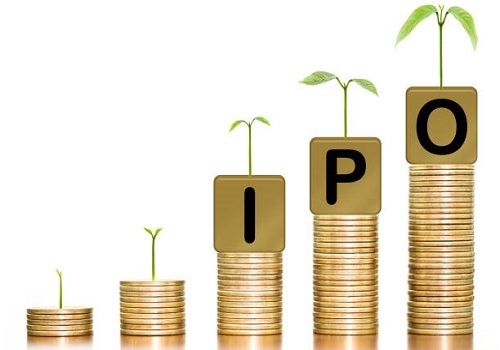
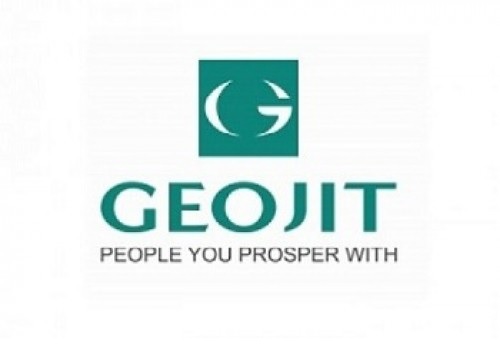
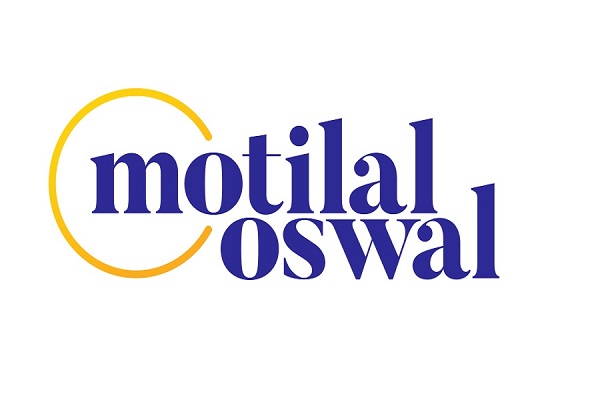

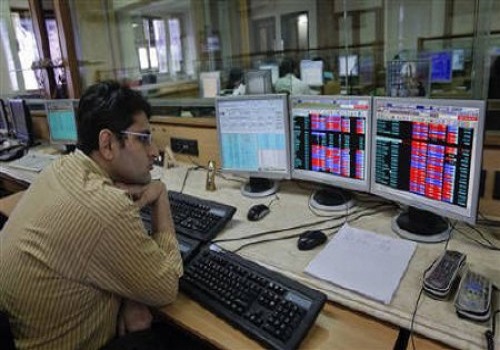
.jpg)


